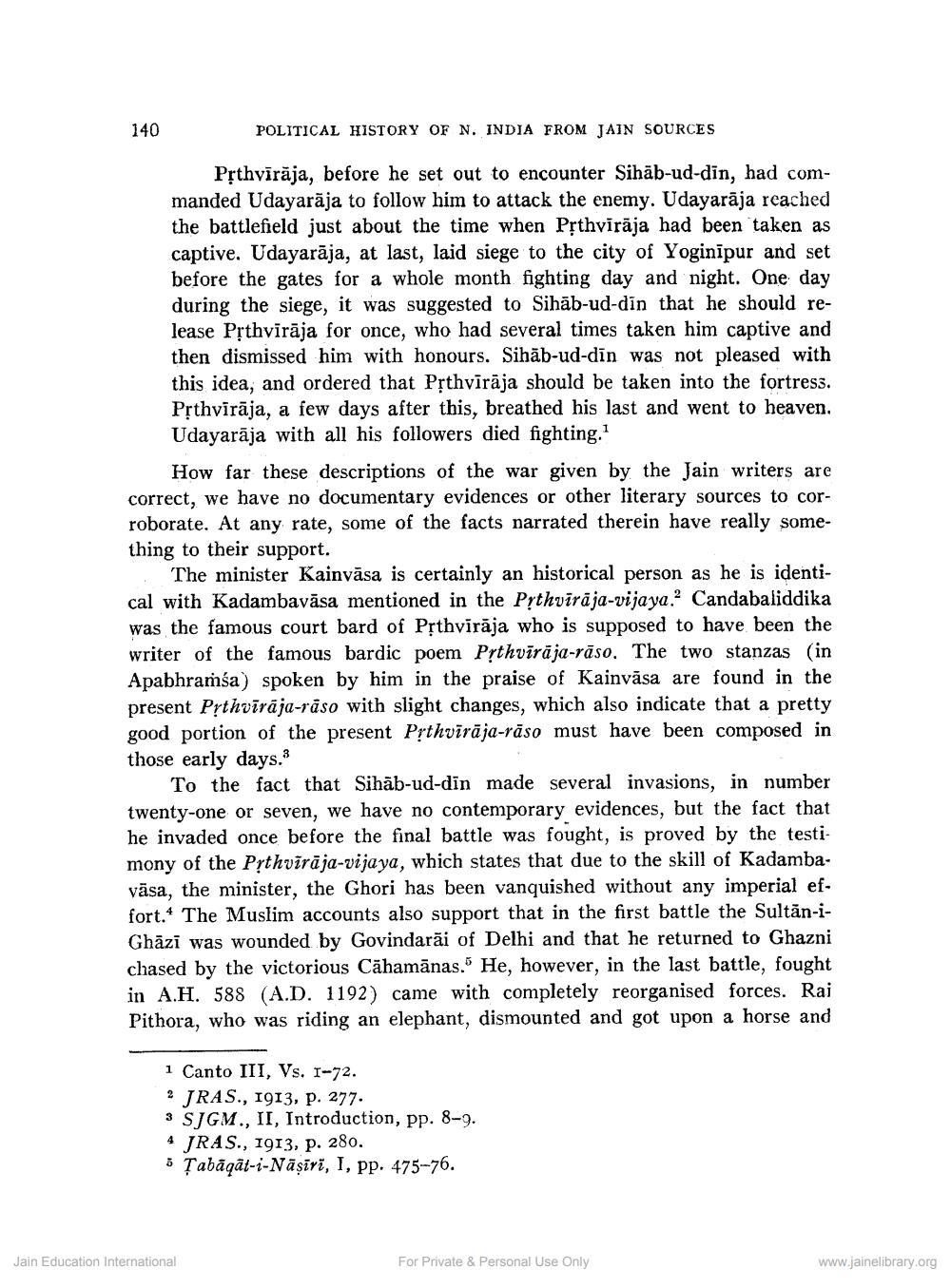________________
140
POLITICAL HISTORY OF N. INDIA FROM JAIN SOURCES
Prthvīrāja, before he set out to encounter Sihab-ud-din, had commanded Udayaraja to follow him to attack the enemy. Udayaraja reached the battlefield just about the time when Pṛthvīrāja had been taken as captive. Udayaraja, at last, laid siege to the city of Yoginipur and set before the gates for a whole month fighting day and night. One day during the siege, it was suggested to Sihäb-ud-din that he should release Prthviraja for once, who had several times taken him captive and then dismissed him with honours. Sihäb-ud-din was not pleased with this idea, and ordered that Prthvīrāja should be taken into the fortress. Prthviraja, a few days after this, breathed his last and went to heaven. Udayaraja with all his followers died fighting,1
How far these descriptions of the war given by the Jain writers are correct, we have no documentary evidences or other literary sources to corroborate. At any rate, some of the facts narrated therein have really something to their support.
The minister Kainväsa is certainly an historical person as he is identical with Kadambaväsa mentioned in the Pṛtkvīrāja-vijaya. Candabaliddika was the famous court bard of Prthviraja who is supposed to have been the writer of the famous bardic poem Prthviraja-räso, The two stanzas (in Apabhramsa) spoken by him in the praise of Kainväsa are found in the present Pṛthviraja-rāso with slight changes, which also indicate that a pretty good portion of the present Pṛthviraja-rāso must have been composed in those early days."
To the fact that Sihab-ud-din made several invasions, in number twenty-one or seven, we have no contemporary evidences, but the fact that he invaded once before the final battle was fought, is proved by the testi mony of the Pythviraja-vijaya, which states that due to the skill of Kadambaväsa, the minister, the Ghori has been vanquished without any imperial effort. The Muslim accounts also support that in the first battle the Sultan-iGhāzi was wounded by Govindarai of Delhi and that he returned to Ghazni chased by the victorious Cähamânas." He, however, in the last battle, fought in A.H. 588 (A.D. 1192) came with completely reorganised forces. Rai Pithora, who was riding an elephant, dismounted and got upon a horse and
1 Canto III, Vs. I-72.
2
JRAS., 1913. p. 277.
* SJGM., II, Introduction, pp. 8-9.
3
4 JRAS., 1913, p. 280.
5 Tabaqat-i-Näṣiri, I, pp. 475-76.
Jain Education International
For Private & Personal Use Only
www.jainelibrary.org




